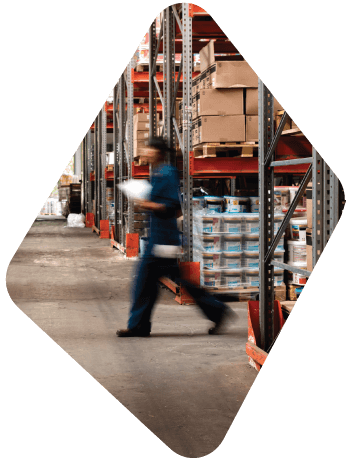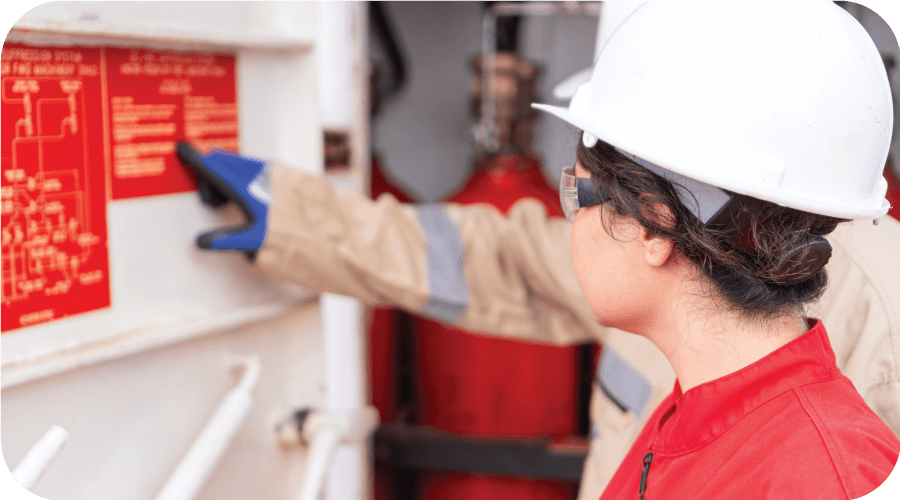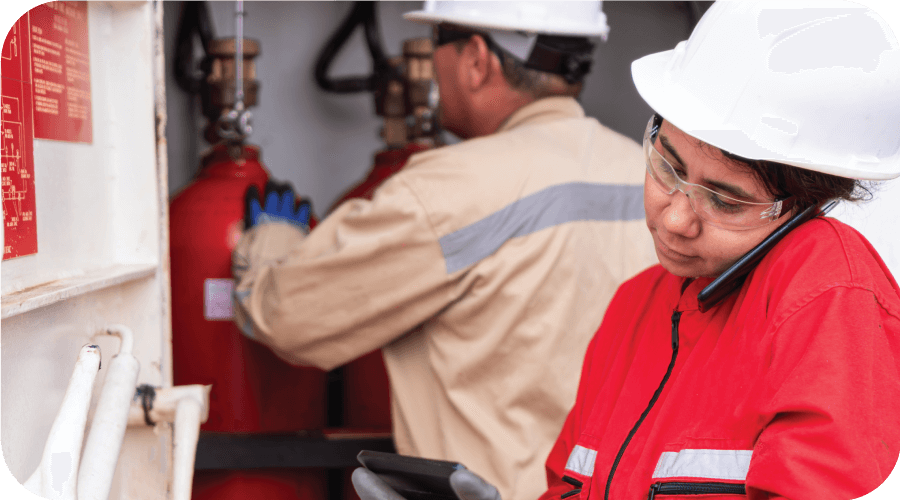Fire Risk Assessments for Warehouses
Warehouses are usually large buildings filled with potentially flammable materials and electrical machinery. This leads to an increased risk of a fire breaking out and spreading, causing large amounts of damage and danger to life.

Lanahan Risk Management Services offers fire risk assessment services to carefully identify all the potential hazards in your warehouse, as well as how best to mitigate these risks. We’ll help you to ensure that your warehouse is fully legally compliant with fire safety regulations too.
Fire risks in warehouse settings

There are some specific risks we need to look out for in a warehouse setting:
Regular inspections and vigilance are important for mitigating risk. A fire risk assessment will outline the hazards and detail actionable steps towards increasing fire safety in your warehouse.
Book a Warehouse Fire Risk Assessment Today
Is it a legal requirement for warehouses to have fire risk assessments?

It is a legal requirement to have a fire risk assessment for a warehouse. The Regulatory Reform (Fire Safety) Order 2005 classes warehouses as a non-domestic property, meaning that a health and safety competent person must conduct a thorough fire risk assessment as a legal obligation.
Any employer with five or more employees, as warehouses often have, must keep a written record of fire risk assessments and actions that have been taken to increase safety. Not only is this a legal requirement, but it is best practice to keep yourself, your employees, and your inventory safe.
How fire risk assessments for warehouses work
Fire risk assessments for warehouses include a comprehensive assessment of the building, outlining any risks which could result in a fire. Warehouse operators are legally obligated to complete and maintain a fire risk assessment on their warehouse for the safety of employees, inventory and property. Any risks should be met with solutions taken to mitigate this risk.
An in-depth risk assessment includes the following steps:
- 1Identify hazards - List flammable and combustible items in the warehouse, as well as equipment or machinery which could lead to fire.
- 2Determine who is at risk - Within a warehouse, you need to consider who is at risk. Are there workers who are more likely to be exposed to these risks? This must be accounted for when devising fire safety measures.
- 3Evaluate and reduce risk - Assess the likelihood and potential impact of each risk, then apply control measures – for example, safe storage rules, segregation of flammable substances, and safe equipment use.
- 4Record, plan and train - You’ll need to create a fire action plan which all responsible members of your team are fully familiar with. Your warehouse workers all need to be trained on how to respond in the event of a fire. You may also need to create a fire evacuation map.
- 5
Regular review - Regularly reviewing your fire risk assessment means you’ll catch any new risks, or any that were previously overlooked. Doing this often ensures that you’re not only maintaining warehouse safety, but actually increasing it.
How often should warehouse buildings have a fire risk assessment?

Warehouse buildings should have a fire risk assessment at least once a year. However, if you want to ensure safety, you should probably conduct an assessment every 6 months. Also, it’s important that any major changes to internal structure are accompanied by a review of your fire safety procedures.
Legislation around warehouse fire safety in the UK
The main legislation around warehouse fire safety is the Regulatory Reform (Fire Safety) Order 2005, which outlines certain requirements such as adequate detection and alarm systems, fire doors where appropriate, and defined escape routes. It also indicates the necessity for proper team training regarding how to handle risks and follow best practices to decrease risk.
Warehouse fire risk assessments by Lanahan Risk Management Services
Lanahan Risk Management has a depth of experience and knowledge regarding fire safety in a number of industries and building types, including warehouses. We’ll help protect your property and those working inside it by conducting a thorough fire risk assessment and giving you an actionable assessment plan which allows you to implement changes to ensure legal compliance and maximum safety.
Get in touch with us to learn more.
Related blogs
Why Should you Outsource Health and Safety Management?
A good alternative to this is outsourcing health and safety management to
Are Fire Door Inspections a Legal Requirement?
When it comes to protecting property and saving lives, there are few
Gap Analysis vs Risk Assessments
Understanding Health and Safety Risk AssessmentsA health and safety risk assessment is
